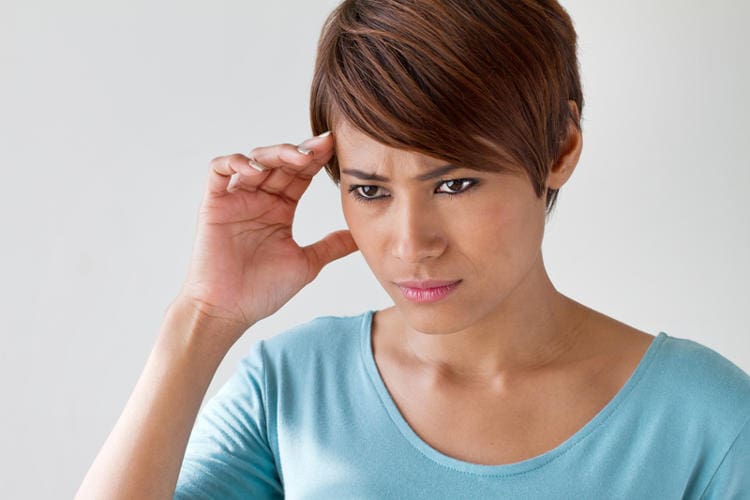Hypoglycaemia is a condition in which there is an abnormally low level of glucose (sugar) in the blood. It occurs most commonly in type 1 diabetes but can occur in type 2 diabetes as well.
In adults with diabetes, hypoglycaemia occurs when:
- the blood glucose level falls below 4 mmol/ L; or
- the blood glucose level is low enough to cause symptoms.
It is important to be aware of the symptoms that indicate your blood sugar is getting too low, and how to treat hypoglycaemia (also called a ‘hypo’).
Symptoms
Symptoms associated with hypoglycaemia include:
- hunger;
- sweating;
- trembling or shaking;
- pale skin;
- pounding of the heart (palpitations);
- anxiety;
- light-headedness or dizziness;
- headache;
- mental confusion and abnormal behaviour;
- drowsiness;
- speech difficulty;
- irritability;
- lack of co-ordination;
- seizures; and
- loss of consciousness.
These symptoms can occur at different levels of blood glucose in different people.
In most cases, there are recognisable symptoms of hypoglycaemia and you can then take appropriate remedial action. However, in some circumstances (for example, during sleep) warning symptoms are not always recognised and the appropriate action is not taken, which may result in the person becoming unconscious.
Also, some medicines, such as beta-blockers, can hide some of the symptoms of hypoglycaemia, making it more difficult to detect.
Hypoglycaemia unawareness
Some people with diabetes become hypoglycaemic but do not experience any of the usual symptoms – this is known as hypoglycaemia unawareness. It usually affects people who:
- have had diabetes for 10 years or more;
- use insulin; and
- have had repeated episodes of mild hypoglycaemia.
Hypoglycaemia unawareness increases your risk of severe hypoglycaemia.
If you have hypoglycaemia unawareness, it’s important to check your blood glucose levels regularly and let your family, friends and co-workers know what to look for and how to help.
Awareness of symptoms can sometimes be partially restored with good blood glucose control (without any episodes of hypoglycaemia) over several weeks.
Causes
Diabetic hypoglycaemia may occur if you:
- accidentally inject too much insulin;
- take too many diabetes tablets (or a combination of insulin and diabetes tablets) for your body’s needs at that time;
- miss or delay a meal;
- don’t include enough carbohydrates in your meal(s);
- drink alcohol, especially on an empty stomach or in excessive amounts;
- have an unplanned physical activity;
- undertake much more strenuous or prolonged exercise than you are used to without compensating by eating extra food; or
- have other medical conditions such as thyroid, liver or kidney problems.
Although it is uncommon, hypoglycaemia can also affect people who do not have diabetes. In people without diabetes, hypoglycaemia can be caused by prolonged fasting, drinking excessive amounts of alcohol and certain underlying medical conditions.
Treatment
A blood glucose level lower than 4 mmol/L should be treated, even if there are no symptoms.
If you experience hypoglycaemia symptoms, you should check your blood glucose level to confirm that your blood glucose level is low.
If testing is not immediately available, start treatment without a blood glucose measurement, especially if symptoms are severe.
Self-care of mild hypoglycaemia
Quickly take 10–15 g of a simple (quick acting, easily digested) carbohydrate to boost your blood sugar — for example:
- 3 teaspoons/cubes of sugar;
- 20 g of glucose tablets (usually 2 or 3);
- a sweetened drink, such as 150 to 200 mL – about half a can – of regular (not diet) soft drink, or half a glass of fruit juice;
- 6-7 jellybeans; or
- one tablespoon of honey.
Always carry some emergency glucose sources with you and keep some at work and in your car.
Your symptoms should improve within 10-15 minutes and you should start to feel better. Measure your blood glucose level to make sure the level has returned to normal. If symptoms persist or the level remains below 4 mmol/L, take another 10-15 g of a simple carbohydrate.
If it will be more than 20 minutes before your next main meal, eat some long-acting carbohydrate such as:
- a sandwich;
- a glass of milk or soy milk; or
- 2 or 3 dried apricots or other pieces of dried fruit.
First-aid for severe hypoglycaemia
If a hypoglycaemic person does not improve and progresses to being drowsy, confused, having a seizure, or being unconscious, it is a medical emergency. If you have been trained to administer glucagon (a hormone that can elevate blood glucose levels and reverse severe hypoglycaemia), do so. You should dial 000 immediately and say that it is a ‘diabetic emergency’.
If the person is unconscious, place them on their side and keep their airway clear.
If the person is conscious and able to swallow they should eat something to prevent another episode of hypoglycaemia. Never give food or drink to a person who cannot swallow properly, for example, if they are drowsy, having a seizure or unconscious.
Regular blood glucose monitoring is necessary following a hypoglycaemic episode.
Prevention
Things you can do to prevent hypoglycaemia include:
- regularly checking your blood glucose levels;
- eating regular meals;
- taking your medicines and insulin as directed;
- adjusting your carbohydrate intake to match physical activity;
- avoiding excess alcohol and not drinking on an empty stomach; and
- knowing how to recognise early symptoms of hypoglycaemia.
To try to prevent future episodes of hypoglycaemia, your doctor should:
- check for any underlying medical conditions that may be increasing your risk of hypoglycaemia;
- review your medicines in case they may be contributing to the problem; and
- review your diet.





